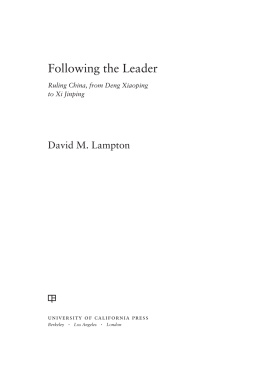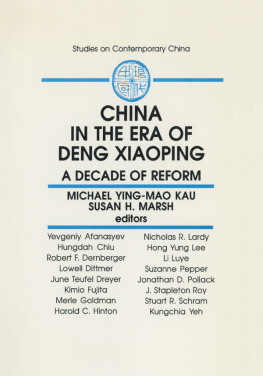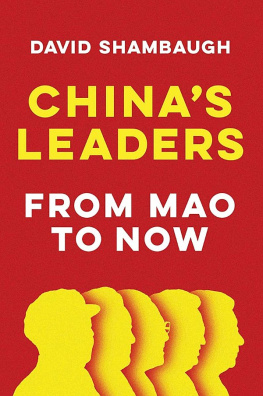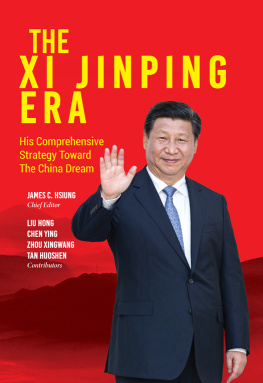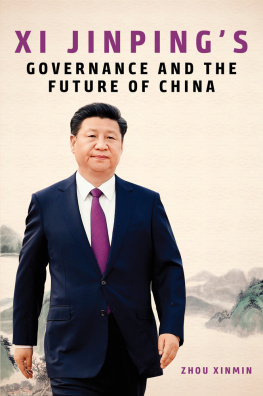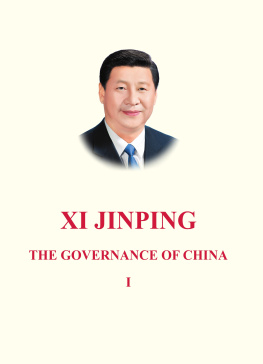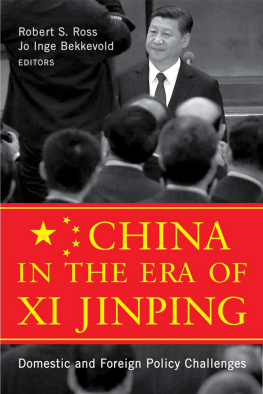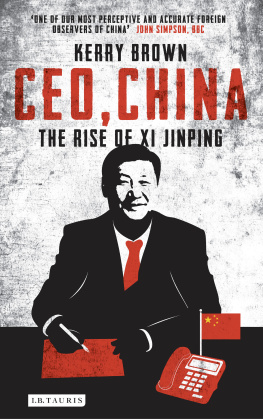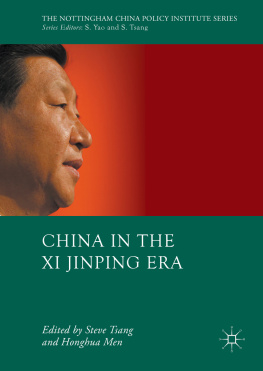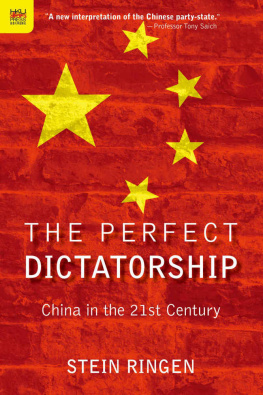
A

BOOK
The Philip E. Lilienthal imprint honors special books in commemoration of a man whose work at University of California Press from 1954 to 1979 was marked by dedication to young authors and to high standards in the field of Asian Studies. Friends, family, authors, and foundations have together endowed the Lilienthal Fund, which enables UC Press to publish under this imprint selected books in a way that reflects the taste and judgment of a great and beloved editor.
The publisher gratefully acknowledges the generous support of the Philip E. Lilienthal Asian Studies Endowment Fund of the University of California Press Foundation, which was established by a major gift from Sally Lilienthal.
Following the Leader
Following the Leader
Ruling China, from Deng Xiaoping
to Xi Jinping
David M. Lampton

UNIVERSITY OF CALIFORNIA PRESS
BerkeleyLos AngelesLondon
University of California Press, one of the most distinguished university presses in the United States, enriches lives around the world by advancing scholarship in the humanities, social sciences, and natural sciences. Its activities are supported by the UC Press Foundation and by philanthropic contributions from individuals and institutions. For more information, visit www.ucpress.edu.
University of California Press
Berkeley and Los Angeles, California
University of California Press, Ltd.
London, England
2014 by The Regents of the University of California
Library of Congress Cataloging-in-Publication Data
Lampton, David M.
Following the leader : ruling China, from Deng Xiaoping to Xi Jinping / David M. Lampton.
pagescm
Includes bibliographical references and index.
ISBN 978-0-520-28121-9 (cloth : alk. paper)
ISBN 978-0-520-95739-8 (e-book)
1. ChinaPolitics and government19762002.2. ChinaPolitics and government21st century.3. Political leadershipChina.4. Political cultureChina.I. Title.
JQ1516.L362013
320.951dc23
2013032715
Manufactured in the United States of America
22 21 20 19 18 17 16 15 14
10 9 8 7 6 5 4 3 2 1
In keeping with a commitment to support environmentally responsible and sustainable printing practices, UC Press has printed this book on Natures Natural, a fiber that contains 30% post-consumer waste and meets the minimum requirements of ANSI/NISO Z 39.48-1992 ( R 1997) ( Permanence of Paper ).
To Noah Joseph and Sadie Mae Lampton, who will live with and shape this centurys relations with China
Contents
Illustrations and Tables
FIGURES
TABLES
Acknowledgments
This book represents many things, not least of which is the accumulation of conversations and assistance I have received from people throughout Greater China since my residence in Hong Kong in 197273. I wish, therefore, to acknowledge the literally thousands of Chinese people who have given their time, shared their knowledge, and expended their energy to educate me over the years. I cannot thank them individually, but they know who they are and the gratitude I feel.
No person is an intellectual island, and the tides and waves of many great teachers and colleagues have defined my shores, not least those from Stanford University, Ohio State University, the Kettering Foundation, the National Academy of Sciences, the National Committee on United States-China Relations, and the Johns Hopkins School of Advanced International Studies (SAIS). I particularly want to thank one of my dearest and most respected colleagues, Ms. Jan Berris, vice president of the National Committee on United States-China Relations. In addition to all she has taught me about China and working with others, she made available to me her monumental collection of meeting notes that I used when writing about the early years following the epoch-changing visit to the Peoples Republic of China (PRC) by President Richard Nixon in 1972.
In undertaking this project I have benefited from the research assistance of several very talented PhD students at SAISindividuals who have helped me install and utilize the data management system that has permitted me to exploit the large number of interviews that are central to this volumes architecture and informational base. In addition, they have helped me think through concepts and have undertaken fact checking: David Bulman, Lily Chen, Eric Hagt, Selina Ho, Amanda Kerrigan, and Tabitha Mallory have my sincere appreciation and admiration. To Dr. Thomas Fingar at Stanford University, I express my thanks for his comments on the entire manuscript, as well as his friendship over our careers. On the editing front, I owe an enormous personal debt to my editor of long standing, Krista Forsgren. At the University of California Press, Senior Editor Reed Malcolm has given me much-valued substantive advice over the years, not least his assistance and guidance with this volume. I also wish to thank Dore Brown, project editor, for her careful and expeditious shepherding of the manuscript through the production process. To Elisabeth Magnus I wish to express my gratitude for her superb copy editing, and Susan Stone has my thanks for preparing the index. Moreover, the staff of UC Press have been most helpful, particularly Editorial Assistant Stacy Eisenstark. Finally, to the anonymous reviewers who assessed the manuscript for the Press, I express my thanks for their suggestions for revisions and corrections that improved the manuscript.
For providing me the resources, time, and productive environment in which to execute the research and writing embodied in this volume, I express my appreciation to several individuals and organizations. Gratefully, I acknowledge the Rockefeller Foundation and its Bellagio Center for providing me a Residency at Villa Serbelloni on Lake Como in northern Italy. There I was free to do nothing but write and interact with a group of creative scholars and artists from around the world in mid-2011. I thank the Foundation and the Centers managing director, Ms. Pilar Palacia, as well as the Centers attentive and excellent staff, for affording me an unparalleled creative environment in which to work.
At SAIS, I have been blessed not only with the graduate students mentioned above but also with a school administration and other colleagues that have been most supportive of my work. I wish to particularly thank former dean Jessica Einhorn, our senior associate dean for finance and administration, Mr. Myron Kunka, and our current dean, Vali Nasr, for their moral and material support of my work. To the Johns Hopkins University and its president, Ron Daniels, and then provost Lloyd Minor, I wish to express my thanks for the ongoing research support provided as part of my designation as a Gilman Scholar. To my colleague Zhaojin Ji, I express my gratitude for her help throughout the process of producing this book. Finally, I must thank the National Bureau of Asian Research and the Woodrow Wilson International Center for Scholars for providing resources connected to the Scalapino Prize of 2010, resources that have greatly facilitated this project and others.
Turning to family, the bedrock upon which my lifetime pursuits have been built, I want to express the love and gratitude I feel for my wife, Susan, and for her support over the forty-five years of our married life. I also want to thank my mother, Mary Jane Lampton, who passed away in April 2012she and my father, Jack W. Lampton, to whom she was married for nearly seventy-four years, gave me the example of values and hard work that I have tried to emulate. To conclude, this book is dedicated to our grandchildren, Noah Joseph and Sadie Mae Lampton. As the world evolves, may it present them with a U.S.-China relationship that makes a better twenty-first century possible.
Next page
